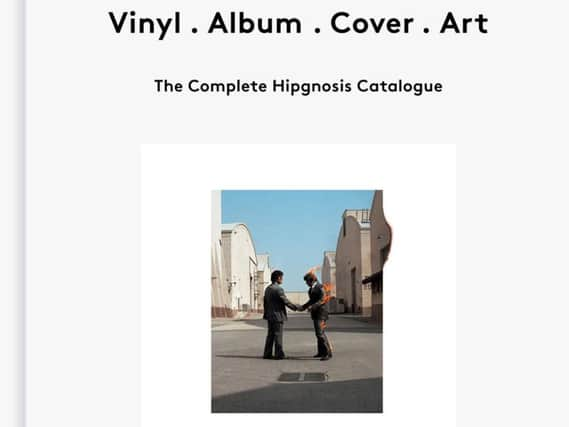Book review: Vinyl. Album. Cover. Art: The Complete Hipgnosis Catalogue by Aubrey Powell


The 12 inch vinyl album, a format now enjoying something of a renaissance – but at a premium price – offered fans much more than just the sounds within, thanks to the increasingly creative covers which housed the disc.
But all good things come to an end and with the arrival of the CD in 1982, even the most eye-catching artwork lost its impact with the necessary shrink job to fit the plastic jewel case.
Advertisement
Hide AdAdvertisement
Hide AdIt was a downgrade indeed, followed later by the download where the imagery disappeared… quite literally into the ether.
Today’s younger music buyers prefer mp3 files and streaming services over old-fashioned physical formats to store and play the soundtrack to their lives.
Many would cite Peter Blake’s groundbreaking design for The Beatles’ Sergeant Pepper’s Lonely Hearts Club Band in 1967 as the catalyst for cardboard creativity.
Covers could now be much more than just a conventional group shot on the front, favoured by record companies of the day, finished off with another photograph and a list of song titles on the rear.
Advertisement
Hide AdAdvertisement
Hide AdThe trend towards gatefold sleeves meant twice the scope for cover concepts and the space to experiment.
And it would be no exaggeration to say design collective Hipgnosis, founded in 1967, fully exploited these new-found freedoms, gaining much-deserved legendary status for the way they transformed the look of album art forever.
The imaginative work of Storm Thorgerson and Aubrey Powell, who became a trio with the arrival of Peter Christopherson, defined the albums of many of the biggest names in the history of popular music from Led Zeppelin to the Rolling Stones, 10CC to Genesis, Wishbone Ash to Peter Gabriel, Be-Bop Deluxe to Black Sabbath, T Rex to Throbbing Gristle, and Yes to XTC.
They enjoyed a particularly fruitful association with Pink Floyd. The first Hipgnosis LP cover dates back to that band’s second outing, A Saucerful of Secrets, which hit the record racks in 1968 and led to a flurry of work from other groups.
Advertisement
Hide AdAdvertisement
Hide AdAubrey Powell, in his lengthy and insightful introduction to Vinyl. Album.Cover.Art: The Complete Hipgnosis Catalogue, reveals: ‘Our mantra was that a good design would always create interest, whether or not it had anything to do with the lyrics, the band image or the music.’
Probably no Hipgnosis cover illustrates this more than that of another Pink Floyd album, Atom Heart Mother, released in October 1970.
The front cover comprised only a photograph of a cow, while the rear featured a drooling bovine trio staring at the camera from a 45 degree angle.
This really was a case of pastures new for the record company which hated the idea of carrying no album title, no group name or photograph, or any hint at all of what lay inside… until it became Pink Floyd’s first UK album chart topper!
Advertisement
Hide AdAdvertisement
Hide AdFor the 15 years it operated, surreal designs became the Hipgnosis trademark and the wild imagination is there for all to see in this beautifully produced book with stunning full colour reproductions of every single cover – a staggering 372 of them – coupled with detailed information and the inside story, in many cases, of how, where and when the project was created.
Since 1982, Aubrey Powell has been involved in film-making, first as a producer and writer and then as director. His former partners have both passed away, Peter Christopherson in 2010 and Storm Thorgerson four years ago.
But thumbing through this curious canon of work which the trio created, readers will relive the days when they lowered the stylus onto LPs whose covers enjoyed a life of their own.
(Thames and Hudson, £24.95)